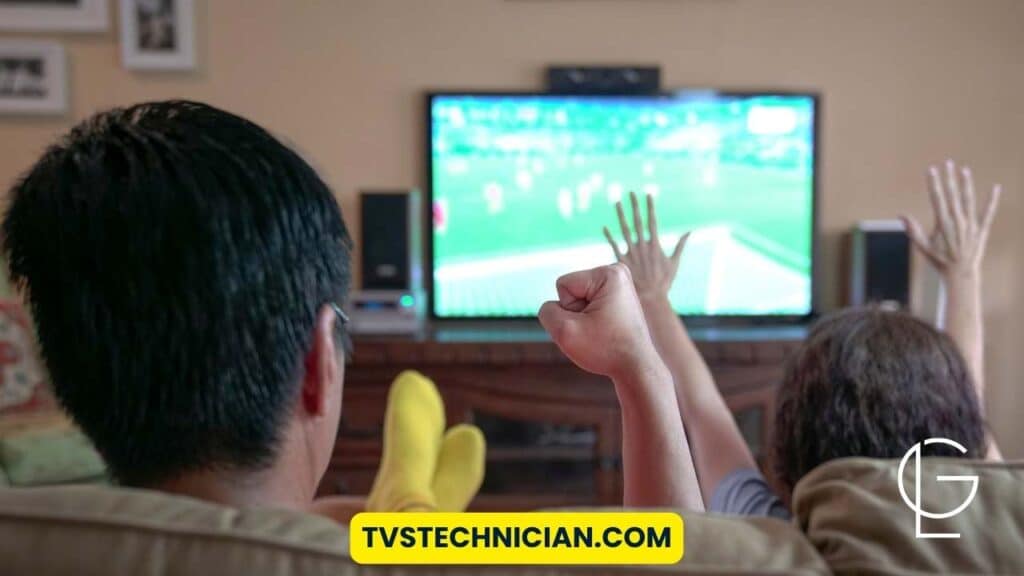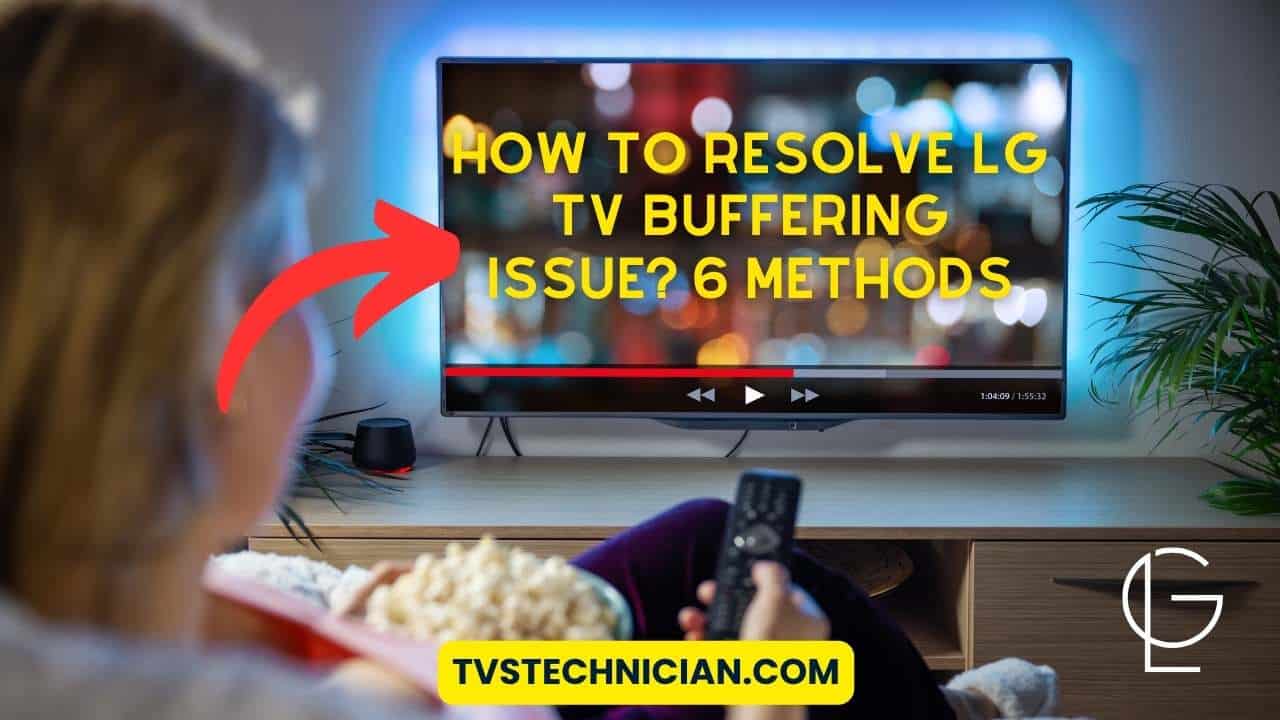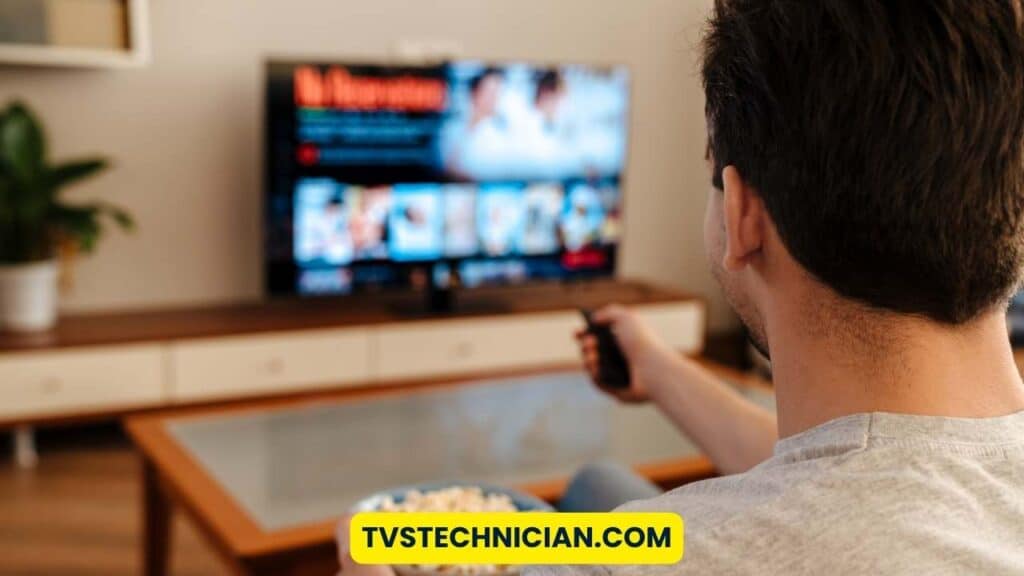Experiencing streaming issues on your LG TV with Roku can be frustrating, but there are practical solutions to ensure smooth and uninterrupted viewing. Here are quick solutions how to resolve LG TV buffering issue?
To resolve LG TV buffering issues, ensure a stable and fast internet connection by checking your Wi-Fi signal strength or connecting via an Ethernet cable. Restart your TV and router, update your TV’s firmware, and clear the TV’s app cache. Additionally, reduce the number of devices connected to your network.
From simple steps and precautions to mastering advanced troubleshooting, this article will guide you through resolving common problems such as buffering, sound issues, and connectivity.
Key Takeaways
- Embrace Ethernet connections for improved stability and reduced buffering when streaming on LG TV with Roku.
- Regularly update your Roku and LG TV firmware to troubleshoot and prevent sound, volume, and other technical issues.
- Utilize advanced troubleshooting techniques like factory resets judiciously to solve persistent problems without losing important data.
- Enhance wifi signals for Roku on LG TV by checking signal strength, repositioning devices, or using extenders for optimal performance.
- Stay informed and prepared by understanding standard HDMI, remote pairing, and wifi issues to navigate and resolve them swiftly.
Why Is LG TV Buffering During Stream?

- Slow Internet Connection: If your internet connection speed is slow, it can lead to buffering issues. Check your internet speed using a speed test tool to ensure it meets the minimum requirements for streaming.
- Wi-Fi Signal Strength: If you’re using Wi-Fi to connect your LG TV to the internet, the signal strength might be weak. Try moving the router closer to the TV or using a Wi-Fi extender to improve signal strength.
- Network Congestion: If multiple devices are connected to your network and using bandwidth simultaneously, it can lead to network congestion and buffering. Try limiting the number of devices using the network or upgrading your internet plan to a higher bandwidth.
- Streaming Service Issues: Sometimes, the buffering might be due to issues with the streaming service itself. Check if other devices are experiencing similar problems with the same service.
- TV Firmware/Software Update: Ensure your LG TV’s firmware and streaming app is current. Sometimes, outdated software can cause compatibility issues, leading to buffering.
- Overloaded Cache: If the TV’s cache memory is blocked, it can cause buffering. Try clearing the cache of the streaming app or performing a factory reset on the TV.
- Hardware Limitations: Older LG TVs might not have sufficient processing power to handle high-quality streaming content smoothly. In such cases, upgrading to a newer model might be necessary.
Simple Steps and Precautions Before Starting
Check Ethernet for a Stable Connection
Regarding uninterrupted streaming, Ethernet is your ally in the battle against buffering. Unlike Wi-Fi, a wired connection provides a direct and secure pathway for your LG TV’s data transmission, ensuring a smoother streaming experience. Here’s why Ethernet should be your go-to:
- Stability: Ethernet connections are less prone to interference, offering a more stable connection.
- Consistent Speed: You’ll enjoy steady streaming without the dreaded buffering symbol.
- Reduced Lag: Say goodbye to delays and enjoy your content as it’s meant to be.
While Wi-Fi offers convenience, Ethernet brings reliability to the forefront, making it an essential tool for streamers seeking consistency.
To enhance your LG TV’s connectivity, consider these steps:
- Update your TV’s firmware to the latest version.
- Reset your network settings to clear any existing issues.
- If problems persist, reach out to LG support for expert assistance.
- Fine-tune your IP address settings and Wi-Fi configurations for an optimized streaming journey.
Resolving Sound and Volume Quandaries
The best streaming experiences are about clear images and immersive sound. Troubleshooting sound and volume issues on your LG TV can significantly enhance your viewing pleasure. Here are some steps to ensure your audio is as captivating as your visuals:
- Verify the volume settings on your LG TV and any connected devices, including Roku and external audio systems.
- Enable HDMI-CEC to streamline device management and potentially resolve compatibility issues.
Armed with these troubleshooting techniques, you’re set to navigate the complexities of streaming challenges. Elevate your streaming experience by ensuring every moment is seamless in sight and sound.
Remember, sound problems can often be a simple fix. Dive into your device settings, check connections, and adjust audio preferences to resolve difficulties. By doing so, you’ll be back to enjoying your favorite shows on Discovery Plus or any other streaming service without missing a beat.
How to Resolve LG TV Buffering Issue? Easy Methods

Method 1: Dealing with Firmware Bugs and Errors
Firmware bugs and errors can be the bane of a smooth streaming experience. Regular updates are crucial for keeping your LG TV and Roku device in harmony, free from the digital gremlins that cause unexpected crashes and buffering issues. Here’s a quick guide to staying on top of firmware updates:
- Check for updates regularly: Your devices often receive updates that fix bugs and improve performance.
- Enable automatic updates: If available, this setting ensures your devices stay up-to-date without manual intervention.
- Perform a manual update if issues persist: Sometimes, automatic updates miss a beat. Check your device settings to initiate an update manually.
Remember, keeping your firmware updated is not just about new features; it’s about maintaining a seamless streaming experience.
If you encounter a problem during the update process, don’t hesitate to contact customer support. They can guide you through troubleshooting steps or inform you about known issues with current firmware versions.
Method 2: Fix Your Wifi Issues
When your LG TV’s streaming experience gets hampered by wifi issues, a few simple steps can make a difference. Start by giving your connection a quick refresh: toggle the wifi off briefly, then back on. This can often recalibrate a shaky connection.
A router restart can act as a reset for your network, clearing out any lingering problems and giving you a clean slate.
If the problem persists, try forgetting your device’s network and reconnecting. This forces your TV to establish a new connection, which can sometimes bypass glitches. For those stubborn wifi gremlins, a hard reset of your modem/router might be the key to a smooth streaming session.
Lastly, ensure your Roku is positioned away from other electronics that could cause interference. A strategic relocation might be the signal boost you need.
Method 3: Troubleshoot HDMI Highs and Lows
Navigating the landscape of HDMI connectivity issues is crucial for a flawless streaming experience. Inspecting HDMI ports and cables resembles directing a play; a single misstep can disrupt performance. Ensure your cables are firmly connected and free from damage, replacing them if necessary.
Enabling HDMI-CEC settings is another step towards a harmonious device ecosystem. This feature allows for the integrated control of your LG TV and connected devices, potentially solving compatibility issues. Remember also to check any external audio devices connected via HDMI.
- Check HDMI ports and cables for secure connections.
- Replace cables that show signs of wear or damage.
- Enable HDMI-CEC settings for better device integration.
- Inspect external audio devices for HDMI connectivity.
Method 4: Solve the Remote Pairing Issue
When your Roku remote and LG TV aren’t on speaking terms, it’s time for a bit of matchmaking. Start by ensuring your remote is in discovery mode; this is the first step to a successful pairing. If you’re unsure how to do this, refer to the remote’s manual or contact the manufacturer for guidance.
Once in discovery mode, your LG TV should recognize the remote. If it doesn’t, here’s what you can do:
- Check the remote’s batteries and replace them if necessary.
- Ensure there are no obstructions between the remote and the TV.
- Restart your LG TV and try pairing again.
If you’re prompted for a PIN or passcode, this information can typically be found in the remote’s documentation. Entering the correct code should finalize the pairing process.
Remember, patience is key. Sometimes, devices take a moment to communicate effectively, so give them a minute or two to sync up before trying again.
By following these steps, you’ll be navigating your streaming options with ease in no time. And with your Roku remote back in action, the power of your entertainment experience rests comfortably at your fingertips.
Advanced Solutions to Fix LG TV Buffering Problem
1. Executing a Factory Reset for LG TV and Roku
When persistent streaming issues plague your LG TV, sometimes the most effective solution is to start anew. Executing a factory reset for LG TV and Roku can often resolve deep-seated problems, including those causing buffering. This process will restore both devices to their original settings, potentially eliminating glitches that have developed over time.
Before you proceed, remember to back up any important data, as a factory reset will erase all saved settings, preferences, and apps. This step is crucial to avoid losing personal configurations and to facilitate a smoother setup post-reset.
For LG TV, the steps are as follows:
- Go to ‘Settings‘ from the home screen.
- Choose ‘All Settings’ and navigate to ‘General‘.
- Select ‘Reset to Initial Settings‘.
- Confirm the reset and allow the TV to restart.
For Roku:
- From the home screen, select ‘Settings.’
- Go to ‘System‘ and choose ‘Advanced System Settings’.
- Click on ‘Factory Reset’ and confirm your decision.
After the reset, you may need to disable the LG TV Demo Mode to ensure your TV operates in home-use mode for optimal streaming performance. If you’re wondering how to resolve LG TV buffering, a factory reset can be a decisive step in troubleshooting, but it should be used as a last resort.
2. Check Ethernet for a Stable Connection
When it comes to uninterrupted streaming on your LG TV, Ethernet is your ally. Unlike Wi-Fi, an Ethernet connection provides a direct and secure link between your TV and the internet router. You can enjoy your favorite shows and movies without the dreaded buffering symbol.
- Stability: Ethernet connections are less prone to interference, ensuring a smoother viewing experience.
- Consistent Speed: You’ll notice a significant difference in streaming quality, especially with high-definition content.
- Reduced Lag: Say goodbye to frustrating delays and enjoy immediate response times.
Remember, a wired connection is often more reliable than wireless, especially in areas with heavy Wi-Fi congestion or when streaming high-bandwidth content.
Before switching to Ethernet, ensure you have the necessary cables and understand the setup process. This straightforward process involves connecting your TV to the internet and ensuring you have the correct wires if you prefer a wired connection.
What to Do if LG TV Doesn’t Recognize Roku?

It can be frustrating when your LG TV Apps are not working, or your LG TV fails to recognize your Roku device. However, there are several steps you can take to resolve this issue. Firstly, ensure that the LG TV and Roku are on the same network. A mismatch in wifi connections can often be the culprit.
If a simple restart doesn’t do the trick, delve into the settings of both devices. Check for any pending firmware updates that might be causing a hiccup in the recognition process.
Additionally, consider the following steps:
- Verify the HDMI connection is secure and functioning.
- Attempt to use a different HDMI port on your TV.
- Repair your Roku remote if necessary.
Remember, if these steps don’t yield success, reaching out to Roku or LG customer support can provide the guidance needed to get your streaming back on track.
How to Improve Wifi Signal for Roku on LG TV?
Improving the wifi signal for your Roku on an LG TV can transform your streaming experience from frustrating to flawless. Check the signal strength of your Roku by navigating to the Settings menu and selecting Network. This will give you a clear indication of the current signal quality.
If you’re encountering issues like the Roku refusing to connect to a new wifi network, addressing potential interference is essential. Relocate your Roku device or router to a more optimal position, ensuring no physical obstructions or electronic devices are causing interference.
For a more robust solution, consider investing in a wifi extender or exploring mesh network options to amplify your signal throughout your home.
Remember, a solid and stable wifi connection is the backbone of a seamless streaming experience on your LG TV with Roku. By taking these steps, you can say goodbye to buffering and enjoy your favorite content without interruption.
Why is My Roku Buffering Despite a Stable Connection?
Experiencing buffering on your Roku despite a stable connection can be frustrating. Here are some steps to help alleviate the issue:
- Check your internet speed: Ensure it meets Roku’s recommended speed requirements.
- Limit bandwidth usage: Other devices might consume large amounts of bandwidth, causing your Roku to buffer.
- Adjust video bit rate: Setting the bit rate can sometimes reduce buffering.
Remember, a strong signal is the backbone of streaming. If you’re facing persistent buffering, it’s crucial to investigate and optimize your network’s performance.
If these steps don’t resolve the buffering, consider other factors, such as router placement or network equipment reset. A direct Ethernet connection can provide a more stable streaming experience than wifi.
Frequently Asked Questions
How can I manually update Roku on my LG TV?
To manually update Roku, navigate to the Home screen, select ‘Settings,’ then ‘System,’ and finally ‘System update.’ Choose ‘Check Now’ to manually check for updates and follow the prompts to install any available updates.
What should I do if my LG TV doesn’t recognize my Roku device?
If your LG TV doesn’t recognize Roku, ensure the device is correctly connected to an HDMI port and powered on. Try using a different HDMI cable or port and restart both devices. If the issue persists, check for software updates on the LG TV and Roku.
How can I improve the Wifi signal for Roku on my LG TV?
To improve the Wifi signal for Roku, check the signal strength in Roku’s ‘Settings’ under ‘Network.’ Relocate the Roku or router to minimize interference, or consider using a Wifi extender or mesh network to boost signal strength.
Related Articles
- What is Kanopy and How to Watch it on LG Smart TV?
- How to Fix “Invalid Format” on LG TV? 3 Easy Methods to Fix
- How to Unlock LG TV from Hotel Mode? 3 Easy Steps
- How to Easily Turn Off HDR on Your LG Smart TV?
- How to Program RCA Remote to LG TV?
